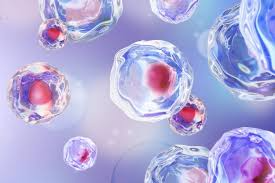
Titan like exoplanet atmosphere
Titan like Exoplanet Atmosphere Discovered A New Frontier in Alien World Research
In a remarkable scientific breakthrough, astronomers have identified an exoplanet with an atmosphere strikingly similar to that of Titan, Saturn’s largest moon. This alien world, orbiting a distant star over 300 light years from Earth, has stunned scientists with the detection of a thick, hazy atmosphere rich in organic molecules and exhibiting complex weather patterns. The discovery, made possible by data from the James Webb Space Telescope (JWST) and confirmed through advanced spectroscopic analysis, opens up exciting new avenues for understanding atmospheric chemistry beyond our solar system. It also challenges long standing assumptions about planetary habitability and the uniqueness of Titan’s environment.
The exoplanet, designated TOI 715b, lies within the so called “sub Neptune” category a class of exoplanets larger than Earth but smaller than Neptune. What has caught scientists’ attention is not its size or orbital configuration, but the nature of its atmosphere. Much like Titan, TOI 715b appears to be enveloped in a dense layer of hydrocarbons, including methane, ethane, and acetylene. The planet also shows signs of a photochemical haze an orange brown smog produced when sunlight interacts with methane remarkably similar to the one that gives Titan its signature amber hue. These atmospheric components, observed through absorption spectra, indicate that complex organic chemistry is occurring high above the planet’s surface.
Titan has long fascinated scientists because of its unique ability to mimic certain Earth like processes in an otherwise alien environment. Its methane lakes, icy crust, and thick nitrogen atmosphere make it the most Earth like body in our solar system after Earth itself. That an exoplanet such as TOI 715b could display comparable characteristics is a profound discovery. Not only does it support the theory that Titan like worlds may be more common than previously thought, but it also raises compelling questions about the diversity of planetary systems and the potential for exotic prebiotic chemistry in environments far different from Earth’s.
The atmosphere of TOI 715b was analyzed using a technique called transmission spectroscopy. As the planet passed in front of its host star an event known as a transit scientists studied the starlight filtering through the planet’s atmosphere. Different molecules absorb light at different wavelengths, allowing researchers to infer the atmospheric composition. The JWST’s NIRSpec instrument was crucial in detecting subtle spectral signatures of methane and other organic compounds. What makes the findings particularly robust is the consistency of the data across multiple transits, confirming that the observed molecules are intrinsic to the atmosphere and not anomalies or measurement errors.
In addition to its chemical makeup, TOI 715b also exhibits intriguing weather phenomena. Observations suggest the presence of upper atmospheric winds and cloud formations possibly composed of methane or hydrocarbon ice. These dynamic weather patterns are reminiscent of Titan’s seasonal changes and atmospheric circulation, albeit likely more extreme due to TOI 715b’s proximity to its star. While Titan orbits Saturn at a frigid distance of 1.2 billion kilometers from the Sun, TOI 715b completes an orbit every 10 days, meaning its atmosphere is subject to more intense radiation and thermal stress. This adds a layer of complexity to its climate, potentially producing exotic storms or photochemical cycles unseen on any solar system planet.
One of the most tantalizing aspects of this discovery is its implications for astrobiology. While TOI 715b is unlikely to host life as we know it mainly due to high surface temperatures and the absence of liquid water it provides a fascinating natural laboratory for studying prebiotic chemical processes. Titan has long been considered a model for how life might arise under non Earth like conditions, especially through methane based or hydrocarbon driven chemistry. If similar processes are occurring on TOI 715b, even in a high temperature regime, it could offer clues about the universality of organic chemistry and the potential for life in forms beyond our traditional carbon water paradigm.
The detection of a Titan like atmosphere on an exoplanet also has implications for future planetary exploration and telescope design. Scientists are already discussing how upcoming missions, such as the proposed LUVOIR or HabEx space telescopes, could further investigate such planets in greater detail. The possibility of identifying planets with thick hazes, organic molecules, and exotic climates expands the scope of what astronomers should look for in their search for habitable or at least chemically active worlds. It also underscores the value of missions like JWST in revolutionizing our understanding of planetary atmospheres and chemistry across the galaxy.
Beyond the scientific implications, this discovery speaks to the rapid evolution of exoplanetary science. Just two decades ago, detecting an exoplanet at all was a major achievement. Today, scientists are not only discovering thousands of exoplanets but are also beginning to understand the complexities of their atmospheres. Finding a world that mirrors the unique characteristics of Titan one of the solar system’s most enigmatic bodies represents a convergence of observational precision, technological advancement, and scientific curiosity. It demonstrates how far humanity has come in its quest to understand the cosmos, and how much more remains to be uncovered.
In conclusion, the identification of a Titan like atmosphere on the exoplanet TOI 715b represents a thrilling milestone in space exploration and atmospheric science. It provides new insights into the potential for complex organic chemistry beyond Earth and challenges conventional ideas about where and how such chemistry might emerge. As instruments like the James Webb Space Telescope continue to peer deeper into the universe, it is becoming increasingly clear that the strange, the exotic, and the unexpected may be far more common in the cosmos than previously imagined. TOI 715b may not be a cradle of life but it is a signpost on the road to understanding how life, in all its diverse possibilities, might take root among the stars.











